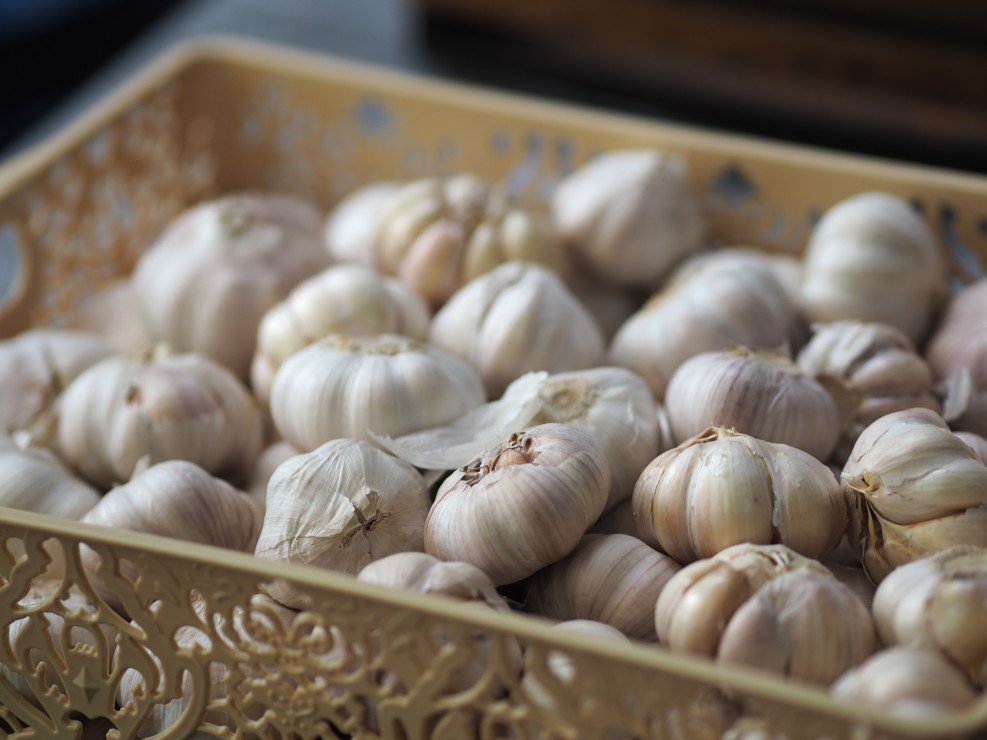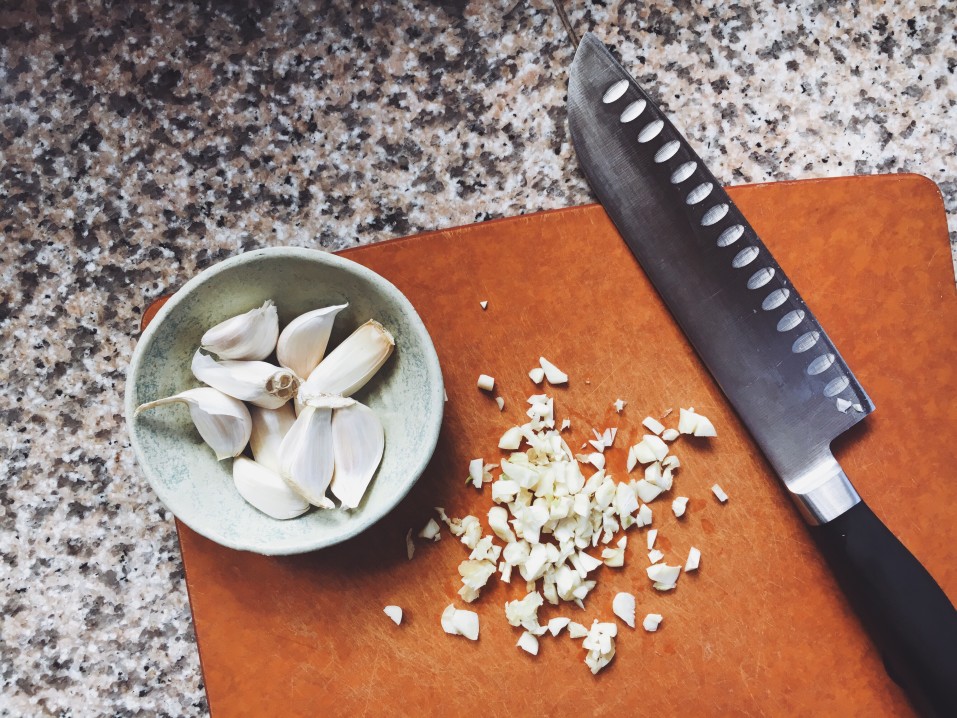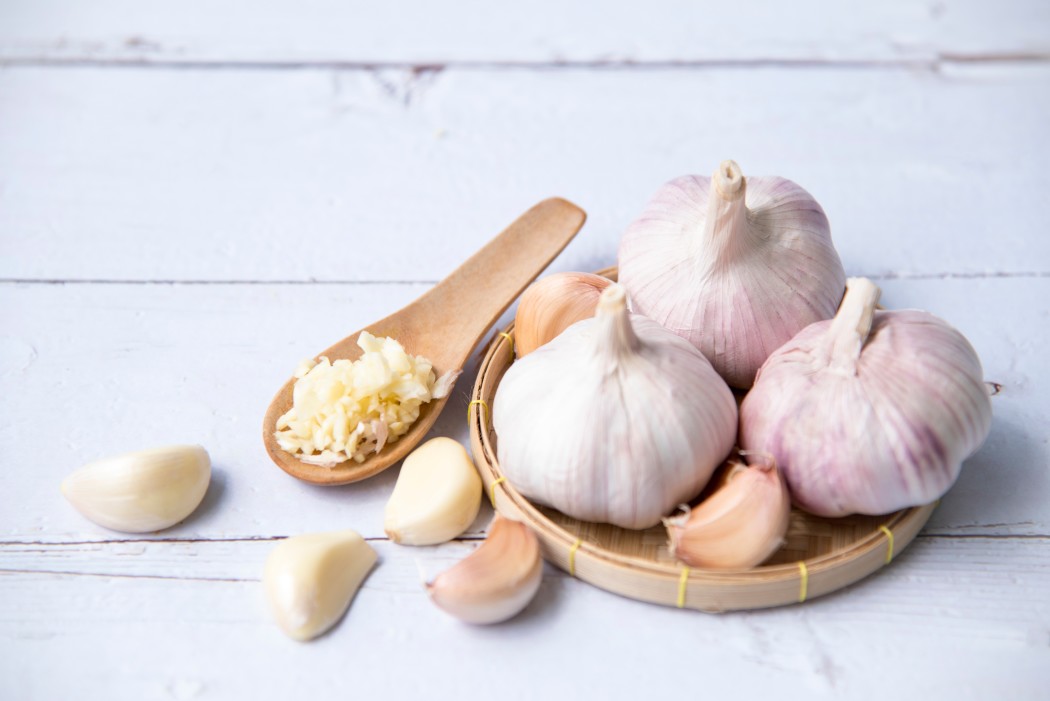The health benefits of garlic have been known for ages. Did you know that the famous ancient Roman physician Galen described garlic as “a cure for all”?
Records from ancient Mesopotamia show that this pungent vegetable has been grown since at least 5000 years ago. Different cultures throughout history have used garlic to prevent and treat a number of conditions.
The magic of allicin
The chemical component which gives garlic its incredible medicinal properties and its characteristic aroma is allicin – a sulfur compound that has been demonstrated to have numerous health benefits.
When ingested, allicin is transformed into sulfenic acid which acts as a powerful antioxidant and helps eliminate harmful free radicals from the body.
According to a study led by Chemistry professor Derek Pratt from the University of Ottawa, “The reaction between the sulfenic acid and radicals is as fast as it can get, limited only by the time it takes for the two molecules to come into contact. No one has ever seen compounds, natural or synthetic, react this quickly as antioxidants.”

The compound allicin has also been found to improve heart health in several ways. Regular consumption of garlic could prevent atherosclerosis by reducing the buildup of plaque on arteries.
Allicin also lowers cholesterol levels and blood pressure and may reduce the risk of strokes, arthritis, and different types of cancer.
Garlic and infection
Garlic can be used for the prevention and treatment of the common cold and has been found to be more effective than both placebo and no treatment. In one clinical study, 146 participants were randomly given either a garlic supplement or a placebo for 12 weeks.
At the end of the study, there were 24 cases of common cold among the group who had used garlic supplements, while the placebo group had 65 cases. Those in the garlic group also experienced fewer days (111) of illness compared with the placebo group (366).

Research has shown that garlic is effective against over a dozen of different bacterial and viral infections, including Helicobacter Pylori infection, Candida infection, Staphylococcus infections, Herpes Simplex, influenza, thrush, and even HIV-1.
How to use more garlic
There are a number of ways you can introduce more garlic into your daily diet. If you want to maximize its many health benefits, it’s best to consume garlic and its raw state.
Some people even chew on fresh cloves first thing in the morning, but if that’s a bit too much to take for you (and the people you live with), there are other ways you can eat more raw garlic.
You can add minced or finely chopped garlic to your salad, salsa, or guacamole. Crushed garlic also makes a delicious toast spread, especially in combination with butter and some parmesan cheese.

Using garlic oil is another easy way to use garlic in cooking. To make homemade garlic oil, all you’ll need are 6-8 large cloves of fresh garlic and 2 cups of olive oil. First, crush the cloves with the back of a large knife, remove the peel and mix the garlic with the oil in an airtight jar. Leave the jar in the fridge for 3-5 days and you’re good to go!
Finally, if garlic’s powerful flavor isn’t your cup of tea, try garlic supplements in the form of powder, but make sure not to exceed the recommended daily dosage.
Sources:
http://www.vegetablefacts.net/vegetable-history/history-of-garlic/
https://www.nccih.nih.gov/health/garlic
https://www.healthline.com/health/foods-healing-power-garlic#garlic-and-cholesterol
https://www.sciencedirect.com/science/article/abs/pii/0306987783900403



Leave a Reply